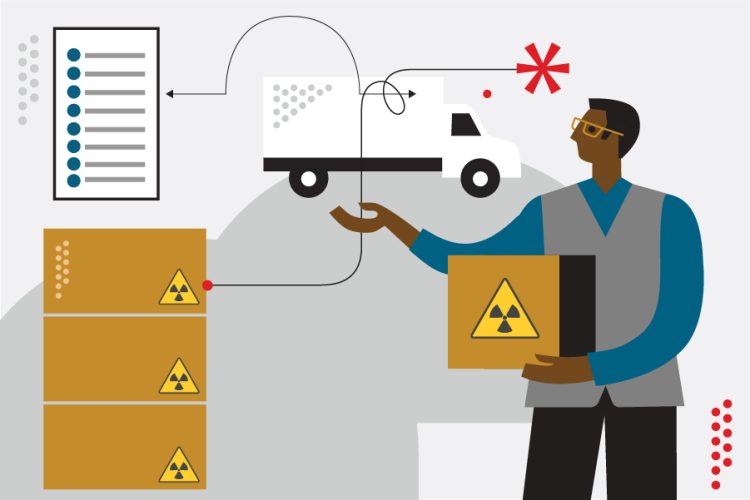Shipping dangerous materials, whether across town or around the world, presents a unique set of challenges that require diligence and adherence to strict safety regulations. Despite the complexities involved, it’s a critical process for industries ranging from healthcare to manufacturing.
In this guide, we’ll walk you through the essential steps to safely ship hazardous materials, ensuring the well-being of your staff, the public, and the environment.
Introduction to Shipping Dangerous Materials
When it comes to shipping dg, the stakes are high. These are substances that, due to their nature, present health, physical, or environmental hazards.
From flammable gases to toxic substances, mishandling can result in serious consequences. Whether you are an experienced logistics professional or a small business owner beginning to ship hazardous goods, following the correct procedures is non-negotiable.
Defining Dangerous Materials
Dangerous materials, often referred to as hazardous materials or hazmat, can take various forms. They include everyday items such as fuel for your car, the ink in your pen, and the cleaning solvents you use at home. However, in the shipping context, dangerous materials are usually industrial or specialized chemicals.
The significance of safe transportation of hazardous goods cannot be overstated. These materials pose real risks to the safety of operational personnel and the general public. Furthermore, accidents can lead to regulatory fines, legal liabilities, and damage to a brand’s reputation.
Understanding Regulatory Requirements
International and domestic regulations govern the transportation of dangerous goods. Understanding and adhering to these laws is paramount in avoiding penalties and ensuring public safety.
● International vs. Domestic Regulations
Different countries have their own regulations, but most adhere to global standards, such as those provided by the International Air Transport Association (IATA) for air freight or the International Maritime Organisation’s (IMO) International Maritime Dangerous Goods (IMDG) Code for marine transport.
The Shipper’s Role in Compliance
As the shipper, you are responsible for classifying, packaging, labelling, and documenting hazardous materials in accordance with the relevant regulations. You are also required to provide proper training to your staff and, where necessary, to the transportation company’s personnel.
Classifying Dangerous Materials
Before you can ship a hazardous material, you must first classify it. This step is essential as the classification determines how items are packaged, labelled, and transported. The system for classification varies by mode of transport but often reflects similar criteria.
Hazardous materials are categorised into nine main classes based on the type of hazard they pose:
- Class 1: Explosives
- Class 2: Gases
- Class 3: Flammable Liquids
- Class 4: Flammable Solids
- Class 5: Oxidising Substances and Organic Peroxides
- Class 6: Toxic and Infectious Substances
- Class 7: Radioactive Materials
- Class 8: Corrosive Materials
- Class 9: Miscellaneous Dangerous Materials
Identifying and Classifying Materials
To classify a material, you must consider its chemical makeup, potential hazards, and intended use. Most shippers rely on Safety Data Sheets (SDS) or consult with a certified professional to determine the appropriate classification.
● Packaging and Labeling Guidelines
Once you have classified the material, proper packaging ensures that it is contained and protected during transportation. Equally important is correctly labelling and marking the package to communicate the hazards to handlers and emergency responders.
● Packaging Materials Appropriately
Each class of dangerous goods has specific packaging requirements designed to prevent leakage or damage. Packaging must meet regulatory standards and may include inner packaging, cushioning, and absorbent material, depending on the hazard.
● The Importance of Labels and Marks
Proper labelling is crucial for the safe transport of hazardous materials. Labels and marks on packages should indicate the type of hazard and include relevant UN numbers, if applicable.
Documentation and Training
Before shipment, it is imperative to make sure that all necessary documentation is in order. Equally vital is training your staff to handle hazardous materials safely and to recognize emergency procedures.
● Essential Documents for Shipping
Common documents include the Shipper’s Declaration for Dangerous Goods, the Bill of Lading, and the Material Safety Data Sheet (MSDS) or SDS. These documents provide information on how to handle and respond to incidents involving hazardous materials.
● Employee Training Programs
An effective training program should cover the properties and hazards of the materials you ship, emergency response procedures, and the proper use and maintenance of equipment. Regular refresher courses are also recommended to keep information up to date.
Choosing the Right Courier
Selecting a courier experienced in the transportation of dangerous goods is as important. Look for carriers with a strong track record in safety and compliance in your specific mode of transport.
Consider the carrier’s experience, equipment, and safety record. Ask for references and ensure the carrier is properly licensed and insured for hazardous materials transportation.
Open and clear communication with your carrier is essential. Provide detailed and accurate information about the hazardous materials, packaging, and any special instructions. Be available to answer questions or provide additional information as needed.
Tips for Safe Transportation
Follow these tips to ensure safe delivery once your hazardous materials are ready for transport.
● Proper Loading and Securing of Materials
Ensure that the materials are safely packed for their mode of transportation and won’t shift during transit. Use appropriate securing methods to prevent spills or movement.
● Dealing with Emergencies During Transportation
Have an emergency response plan in place, and ensure that all personnel involved in the transportation are familiar with it. This includes the carrier’s drivers, as well as any warehouse or distribution centre staff.
Conclusion and Resources
In conclusion, understanding regulatory requirements and adhering to them is crucial for safely transporting hazardous materials. Proper classification, packaging, labelling, documentation, training, and carrier selection are essential to ensuring compliance and safety.
Additional resources such as government agencies, industry associations, and training programs can provide further guidance on specific regulations and best practices for transporting dangerous goods. Continual education and staying updated on regulation changes are also vital for maintaining compliance and promoting safe transportation practices.


